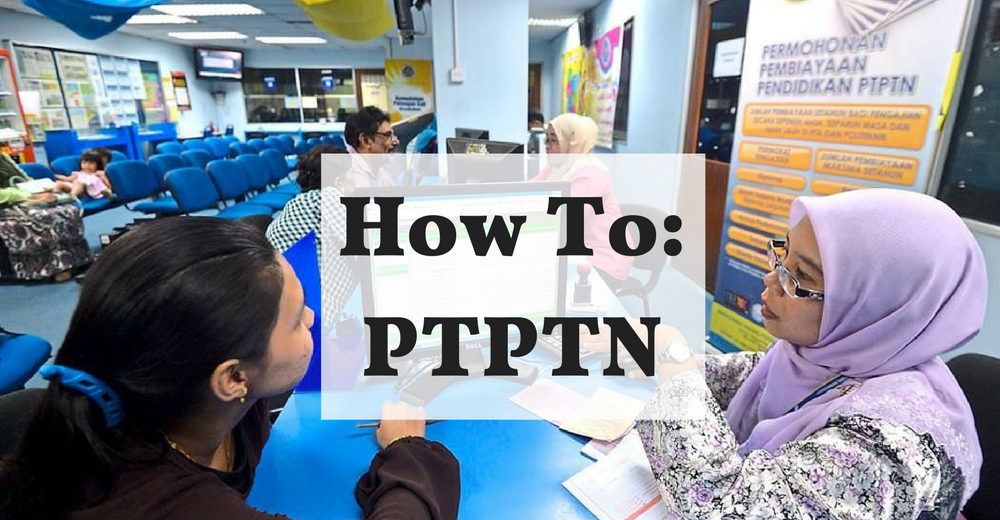The PTPTN loan can be a useful option for college and university students, but the processes behind that loan can prove to be confusing. The PTPTN website, while thorough, is not necessarily clear on what certain terms in their guidelines mean.
Furthermore, there are also well-understood conventions that are not listed on any official guideline that may prove to hinder the beginner PTPTN recipient who just wants to put this whole confusing ordeal behind him.
As a loan recipient myself, I completely understand.
To do my part in helping, I’ve compiled this guideline to help simplify the confusing process, from application to repayment.
Do You Qualify For PTPTN?
First things first. Do you even qualify for a loan in the first place?
According to the PTPTN website, here are the criteria that potential applicants should fulfill:
- Malaysian citizen.
- Not older than 45 years old at year of application.
- Passed SPM with at least 3 distinctions in any language or an equivalent course.
- The course studied has been accredited by the relevant government bodies (Jabatan Pengurusan IPT, MQA, etc) and is still within accreditation period during application.
- If a previous PTPTN loan was taken, there should be no more than one year’s worth of payments left in that account.
- Not currently under any other loan program.
- Have an SSPN account before application.
Do remember that the PTPTN education loans are subject to a flat rate of Upah (Ujrah) of 1% per annum, so consider this before application. Essentially, this means that repayment is subject is 1% of interest a year.
How Much Loan Can You Receive?

Applying For A Loan
Do remember that you can only apply within the given application periods. The application periods are different for all the universities, and students should check the PTPTN website for information on when their universities will open applications, or simply ask the university itself.
Usually the application period for most universities will be held twice per semester.
1. Online Application
Here is what you need to begin application.
- Applicants need to purchase a PIN number for RM5 at any Bank Simpanan Nasional (BSN) branch.
- The method for buying the PIN number can be found here.
- The pin number will only be valid for 6 months after purchase.
- Applicant has to already be accepted into the high learning institution before application
- Have a bank account number under a bank that has been set by each high learning institution.
Once all of this is settled, apply here. You can use the same link to check the status of your loans.
2. Application Through Higher Learning Institute
For offline applications, applicants need to fill in a form. The form can either be obtained through PTPTN or the higher learning institute (IPT) for RM5 per copy. Applicants can also request a copy of the form through post by including postal order (wang pos) and a stamp worth RM2 to the following address:
Ketua Eksekutif
Perbadanan Tabung Pendidikan Tinggi Nasional
Lot G2, Tin Semantan, Damansara Heights
50490 Kuala Lumpur
Completed forms need to be submitted to your university or college according to the dates that has been set by the school. Again, it will usually be held twice per semester. Do not send your applications straight to PTPTN as they will not be processed.
Each application needs to be submitted along with one copy of the following documents. The documents need to be verified, but most of the time, the higher learning institute itself will verify the documents once you have submitted them. Be sure to check with the PTPTN handler in your university to make sure though.
Documents to be submitted along with the application:
- A copy of the applicant’s IC (front and back on the same page).
- University/College offer letter.
- SPM Cert, OR a copy of SPM results if it has been less than 2 years since SPM was last taken.
- A copy of the Bankbook or statement from the relevant bank with applicant account number, based on the bank that has been set by each higher learning institution.
- Pay slip of both parents/guardian, spouse (if married), or a filled-out copy of this form.
- Or if the biological parent has passed away, a death certificate.
- SSPN membership card/SSPN deposit slip/print of SSPN account statement from the PTPTN website.
If applying starting from the 2nd semester and above, the following documents need to be added on:
- Letter from university/college confirming that applicant is still with the school (Surat pengesahan).
- A copy of results acquired for every semester before application.
Information about course code or code for the higher learning institution can be acquired either from the school or through this link.
Once that is done, wait for the letter to come from PTPTN. If the letter does not arrive within 1 month of PTPTN receiving your form, you can assume that your application was not successful, according to the website.
More information on application process can be found here.
Once The Loan Is Approved
In your loan approval form, you can see both the total sum that you will be getting from PTPTN, as well as the amount of money that you will be getting each semester. You will receive the money on a per-semester basis, meaning the cash will be credited to your account once per semester.
The Funds Will Arrive When:
- The loan agreement is complete and received by PTPTN.
- PTPTN receives the student’s status of study from the relevant institution.
- The loan disbursements will be credited into the student’s account unless otherwise agreed upon.
If you need to cancel your PTPTN loan for any reason like because you are shifting schools or because you have acquired other forms of loan or scholarship, you can fill up this form and submit it to any PTPTN office. Information on locations of PTPTN offices can be found here.
Post-Graduation: Defer Payment
If you are going to further your studies full-time, you are able to defer payment by bringing relevant documents to any PTPTN office.
You are also able to apply for deferment if you are out of work (maximum 24 months from the date of your first repayment) or if you are facing legal action against yourself.
The documents you need are as below:
- A filled up copy of this form.
- A copy of the offer letter from your higher learning institute (both the old and the new).
- A letter from the new sponsor (if recipient of other form of sponsorship other than PTPTN).
- Letter confirming the end of studies in the university (if not stated in the offer letter).
- A copy of the transcript and certificate for the completed level of education (if relevant).
Do note that the processing fee as stated in the loan approval letter will still apply to the student as long as the deferral is in place.
Also, if you plan to quit your studies but pick it up again at the same level, you should know that you have to pay off the previous loans in full before you can re-apply.
Post-Graduation: Getting A Loan Exemption
If you graduated with a first-class honours, you are able to convert your loan into a scholarship by applying for a loan exemption.
You need to meet the following criteria to qualify for an exemption:
- Attend a full-time course.
- Finish your studies within the period that is stated in your loan agreement.
- Did not accept any other sponsorship while with PTPTN.
- Study a course that was accredited.
- Obtain a degree with first class honours.
For graduates after 2010, you must submit your FULL documents to PTPTN before 12 months have passed after your convocation.
Documents that you will need:
- A filled copy of the Akuan Peminjam form.
- A copy of your degree with first class honours that has been verified.
- A copy of your results transcript that have been verified.
- For IPTS applicants, an accreditation cert from MQA.
- Validation letter of first class honours (if not stated in the certificate).
In some universities, a university will ask applicants to bring the documents into the university itself and they will both verify and send the documents in, along with the MQA cert if needed on the applicant’s behalf.
If you studied in an IPTS (private university) it is a good idea to ring your university, as you will need them to provide your MQA cert as well.
*A popular rumour states that most of the time, your application for payment exemption will be approved so long as the applicant did not need to appeal for the first class honours.
This means that if a course has set a CGPA of 2.5 as the minimum to receive a first class honours and the applicant has received a CGPA of 2.55, they will likely get the exemption.
Meanwhile, if the course has set the minimum CGPA for first class honours as 3.9, and the student appealed for the first class honours after receiving a CGPA of 3.89, they will most likely be rejected even if in this scenario, they scored better than the previous applicant.
Post-Graduation: Repayment Methods
Do start paying off the instalments for the PTPTN loan 6 months after your graduation date.
These are the methods you can use to pay back your loans.
Payment Portal
You can pay off your loans directly to the PTPTN website here, simply by filling in your IC number and followthe steps listed. From there, you can choose your payment method.
The preferred method of payment proves to be the FPX method, as you are allowed to pay however much you like in a month as long as you fulfill your repayment within the stipulated time stated in your loan agreement.
To start payments, head to the website. From here, fill in your IC number, then click on the highlighted button below.

Then, fill in your IC and password.


Click on ‘Penyata Baki’, then click on ‘Bayaran Bayaran Balik melalui FPX’.
One you see the below page, you can choose which version of installments best suits your abilities, then click ‘Bayar’.

Then choose whichever bank best suits you, then proceed to pay.
Other Methods

The form for salary deductions can be found here and can be sent in to PTPTN with the employer’s name and address.
More information can be found here.
Repayment Discount
If you can afford to pay off your loans in a lump sum, it is a good idea to wait on it as PTPTN conducts discounted payment drives often. Most of the time, these discounts will be given to loan recipients who are able to pay in a huge lump sum, with better discounts given if more can be paid at a time.
However, remember that if you hold off from paying for too long, immigration may block you from flying out of the country so keep your ear to the ground, and plan accordingly.
Just in case, if you want to check if you have been blocked, you can find out here.
Feature Image Credit: The Star














